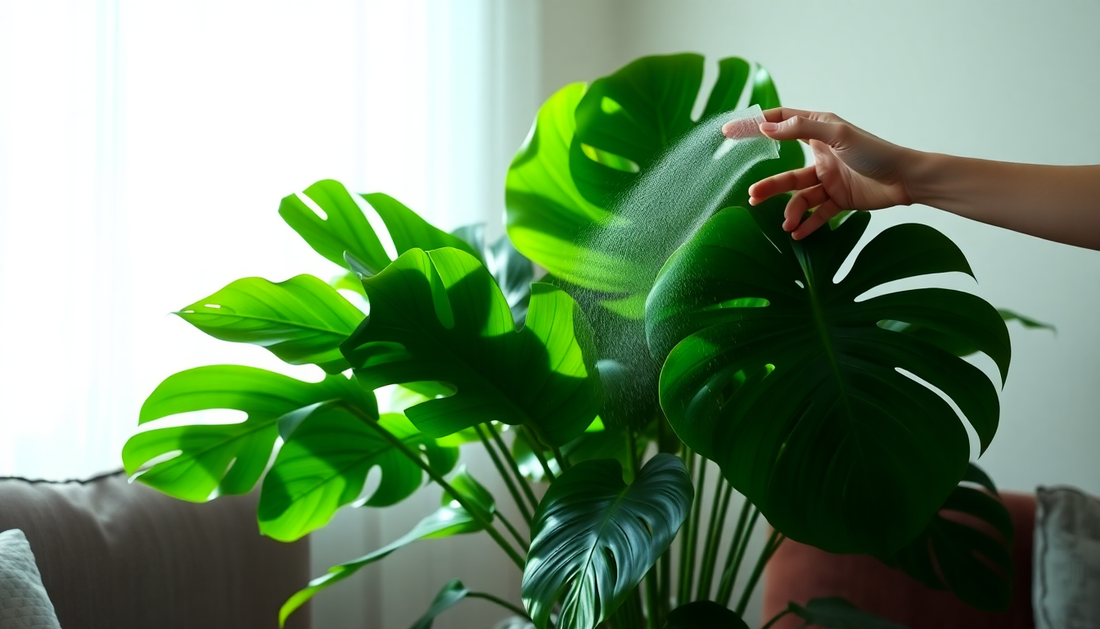
Caring for Monstera in Low Light: A Guide to Keeping Your Houseplant Thriving
Share
Monstera plants have become a beloved staple in many homes, thanks to their striking foliage and air-purifying abilities. However, one of the common challenges faced by Monstera owners is caring for their plant in low-light conditions. Whether you have limited natural light in your living space or simply want to incorporate this lush greenery into a dimly lit corner, this guide will provide you with the essential tips and tricks to keep your Monstera thriving.
Understanding Monstera's Light Requirements
Monstera deliciosa, the most popular variety of this plant, is native to the tropical rainforests of Central America, where it grows in the dappled light of the understory. This means that while Monstera can tolerate and even thrive in bright, indirect light, it is also well-equipped to adapt to lower-light environments.
In general, Monstera plants prefer bright, indirect light, but they can also do well in medium to low light conditions. The key is to avoid direct sunlight, which can scorch the leaves and cause them to turn yellow or brown.
Choosing the Right Spot
When selecting a location for your Monstera in a low-light setting, consider the following factors:
Proximity to Windows
Positioning your Monstera near a window, even if it's not a particularly bright one, can make a significant difference. The closer the plant is to the window, the more light it will receive.
Reflective Surfaces
Placing your Monstera in front of a light-colored wall or using a mirror to reflect light can help increase the amount of illumination reaching the plant.
Artificial Lighting
If your living space lacks natural light, you can supplement with artificial lighting. LED or fluorescent grow lights can provide the necessary illumination for your Monstera to thrive.
Soil and Watering Considerations
In low-light conditions, it's important to adjust your Monstera's soil and watering needs to ensure optimal growth.
Soil
Monstera plants prefer well-draining, nutrient-rich soil. In low-light environments, it's best to use a potting mix that is specifically formulated for indoor plants or one that contains a higher proportion of organic matter, such as peat moss or compost.
Watering
Overwatering is a common issue for Monstera plants in low-light conditions, as the soil takes longer to dry out. To prevent root rot, water your Monstera only when the top inch or two of soil is dry to the touch. Stick your finger into the soil to check the moisture level before watering.
Fertilizing and Pruning
Fertilizing
Monstera plants have moderate fertilizer needs, and in low-light conditions, they may require even less. Use a balanced, water-soluble fertilizer diluted to half strength and apply it every two to three months during the growing season.
Pruning
Regularly pruning your Monstera can help maintain its shape and encourage new growth. Remove any damaged, diseased, or dead leaves and stems to keep the plant looking its best.
Troubleshooting Common Issues
Leaf Discoloration
If your Monstera's leaves are turning yellow or brown, it could be a sign of too much or too little light. Adjust the plant's location accordingly and monitor the changes.
Slow Growth
Monstera plants may exhibit slower growth in low-light conditions. Be patient and continue to provide the appropriate care, and you should see gradual improvements over time.
Pests and Diseases
Monstera plants are generally quite resilient, but they can still be susceptible to common houseplant pests, such as spider mites or mealybugs. Regularly inspect your plant and take action at the first sign of an infestation.
Conclusion
Caring for a Monstera in low-light conditions may require a bit more attention and adjustment, but it's certainly achievable. By understanding the plant's light requirements, choosing the right spot, and maintaining proper soil and watering practices, you can help your Monstera thrive and bring its lush, tropical beauty to any dimly lit corner of your home.
Remember, patience and consistent care are key when growing Monstera in low-light environments. With the right approach, you can enjoy the beauty and air-purifying benefits of this stunning houseplant, even in the most challenging lighting conditions.
